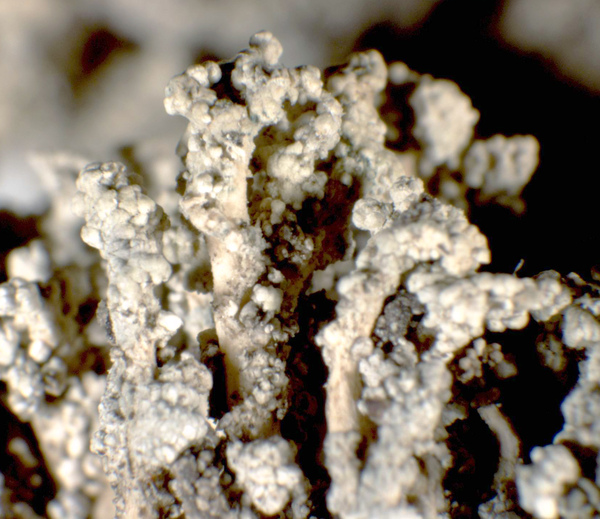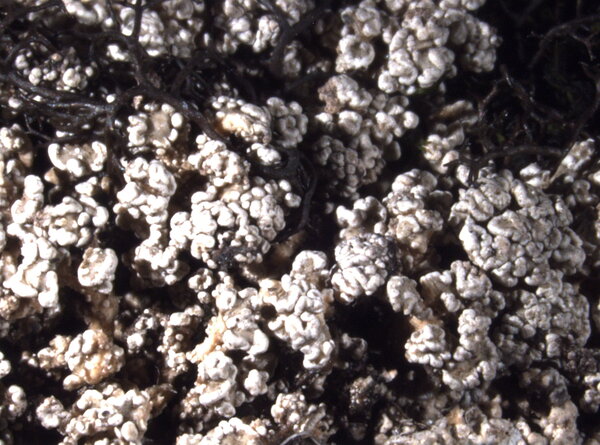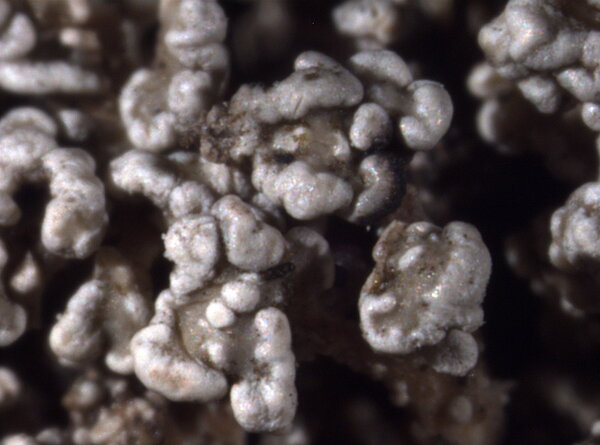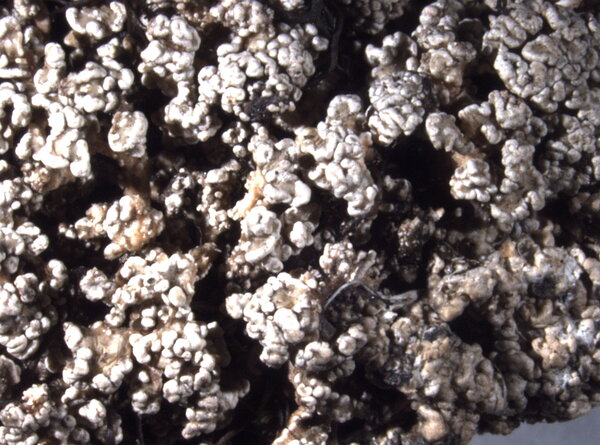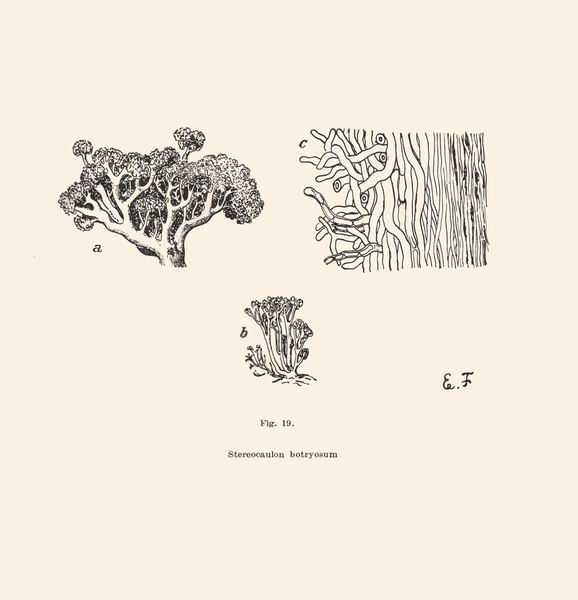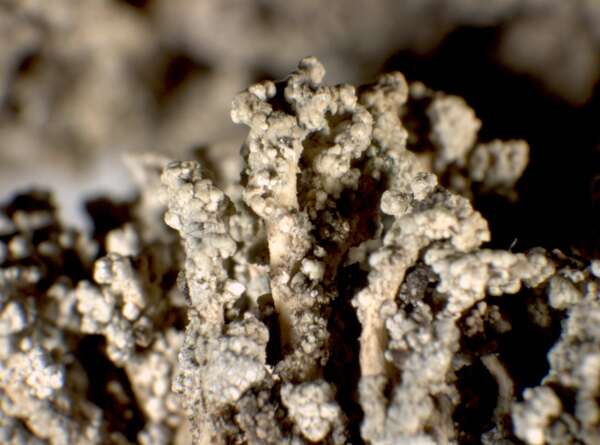Stereocaulon botryosum Ach.
Lichenogr. Univ.: 581, 1810.
Synonyms: Stereocaulon alpinum var. botryosum (Ach.) Laurer; Stereocaulon evolutum var. fastigiatum (Anzi) Th. Fr.; Stereocaulon fastigiatum Anzi
Distribution: N - Frl (Tretiach & Hafellner 2000), TAA (Nascimbene & al. 2022), Lomb (Rivellini 1994, Rivellini & Valcuvia 1996, Oset 2015, Gheza 2017), Piem (Isocrono & al. 2004), VA (Borlandelli & al. 1996, Piervittori & Isocrono 1997, 1999).
Description: Primary thallus crustose-farinose, ephemeral, usually absent in mature individuals. Pseudopodetia firmly attached to the rock, erect, rigid, 5-20(-30) mm high, 0.3-0.6 mm thick at base, white with a pink tinge, brownish black at the base, grey-tomentose in lower part, usually glabrous in upper part, the apical parts abundantly branched, with a solid cartilaginous axis of parallel hyphae surrounded by a lax medulla, forming 1-2 cm broad cushions which are often subcrustose in central parts. Phyllocladia crowded in the upper parts of pseudopodetia, granular-verruciform, glaucous white, often confluent, forming cauliflower-like masses. Cephalodia usually scarce and inconspicuous, 0.2-2 mm across, violet, often pruinose, with Nostoc or Stigonema. Apothecia rare, brown, 1-3 mm across, mostly terminal, with a convex disc and an indistinct proper margin. Asci 8-spored, cylindrical-clavate, with a K/I+ blue outer layer and apical dome, and a central, K/I+ darker blue tube, Porpidia-type. Ascospores mainly 3-septate, hyaline, fusiform. Main photobiont: chlorococcoid. Spot tests: K+ yellow, C-, KC-, P- or P+ faintly yellow, UV-. Chemistry: atranorin and porphyrilic acid.Note: an arctic-alpine, probably circumpolar lichen found on steeply inclined surfaces of siliceous rocks in humid-shaded situations, with optimum above treeline, up to the nival belt; restricted to the Alps in Italy.
Growth form: Fruticose
Substrata: rocks
Photobiont: green algae other than Trentepohlia (primary); cyanobacteria, filamentous (e.g. Nostoc, Scytonema) (secundary, e.g. in cephalodia)
Reproductive strategy: mainly sexual
Commonnes-rarity: (info)
Alpine belt: rare
Subalpine belt: very rare
Oromediterranean belt: absent
Montane belt: absent
Submediterranean belt: absent
Padanian area: absent
Humid submediterranean belt: absent
Humid mediterranean belt: absent
Dry mediterranean belt: absent
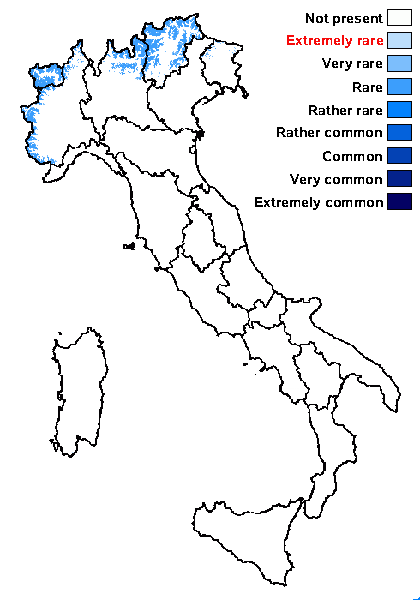
Predictive model
Herbarium samples
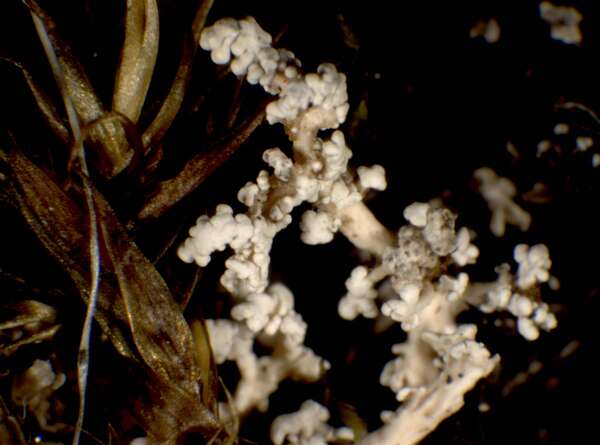

P.L. Nimis; Owner: Department of Life Sciences, University of Trieste
Herbarium: TSB (16745)
2001/12/17
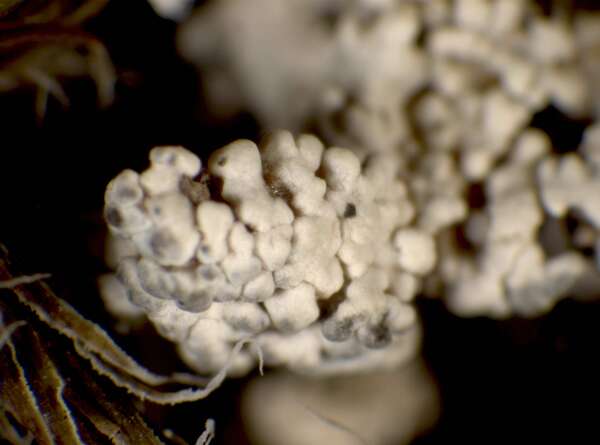

P.L. Nimis; Owner: Department of Life Sciences, University of Trieste
Herbarium: TSB (16745)
2001/12/17
phyllocladia
Growth form: Fruticose
Substrata: rocks
Photobiont: green algae other than Trentepohlia (primary); cyanobacteria, filamentous (e.g. Nostoc, Scytonema) (secundary, e.g. in cephalodia)
Reproductive strategy: mainly sexual
Commonnes-rarity: (info)
Alpine belt: rare
Subalpine belt: very rare
Oromediterranean belt: absent
Montane belt: absent
Submediterranean belt: absent
Padanian area: absent
Humid submediterranean belt: absent
Humid mediterranean belt: absent
Dry mediterranean belt: absent

Predictive model
| Herbarium samples |


P.L. Nimis; Owner: Department of Life Sciences, University of Trieste
Herbarium: TSB (16745)
2001/12/17


 Index Fungorum
Index Fungorum
 GBIF
GBIF
